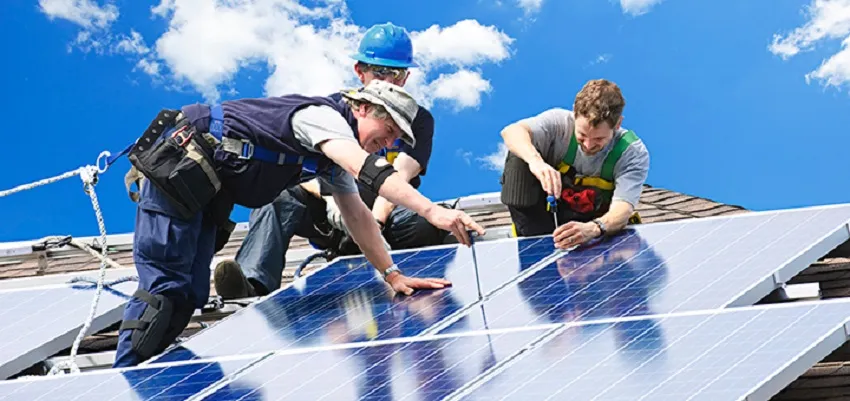Solar panel installations have become a common sight on rooftops and properties worldwide, driven by the desire for clean, renewable energy sources and cost savings. However, the process of installing solar panels is not as simple as placing them on a roof or in an open area. Compliance with building codes and regulations is a critical aspect of solar panel installation to ensure safety, performance, and the longevity of the system. In this article, we will explore the importance of adhering to building codes when installing solar panels and delve into considerations beyond compliance that can further optimize solar installations.
Building Codes and Their Role
Building codes are a set of regulations and standards established by local, state, and national authorities to ensure the safety and structural integrity of buildings and installations. When it comes to solar panel installations, building codes serve several crucial purposes:
- Safety: Building codes are primarily designed to protect the safety of occupants and prevent accidents related to structural and electrical components.
- Structural Integrity: Solar panels are relatively heavy, and their installation requires anchoring to a building’s structure. Compliance with building codes ensures that the building can support the added weight without compromising its integrity.
- Electrical Standards: Solar panel installations involve electrical components, including wiring and inverters. Building codes address electrical safety to prevent fires and electrical hazards.
- Environmental Impact: Building codes may include requirements related to environmental sustainability, such as wind resistance, seismic considerations, and energy efficiency.
- Grid Integration: Some building codes govern the connection of solar installations to the electrical grid to ensure proper operation and grid stability.
- Aesthetic Considerations: In some cases, building codes may include rules to maintain the visual harmony of neighborhoods and communities by regulating the placement and appearance of solar panels.
Building Codes and Solar Panel Installation
Compliance with building codes is a fundamental requirement when installing solar panels. Here are some key considerations for ensuring code compliance:
- Permitting: Before starting a solar panel installation, homeowners or installers must obtain the necessary permits from local authorities. This involves submitting plans and specifications that meet building code requirements.
- Structural Assessment: Building codes require an assessment of the building’s structural capacity to support the added weight of solar panels. This assessment ensures that the roof or support structure is suitable for the installation.
- Electrical Standards: Solar panel systems must adhere to electrical codes to ensure safe and reliable operation. This includes proper grounding, wiring, and protection against overcurrent and fault currents.
- Fire Safety: Building codes may include fire safety provisions related to the proximity of solar panels to roof vents, chimneys, and other potential ignition sources.
- Grid Connection: If the solar panel system is connected to the electrical grid, compliance with utility and electrical codes is essential. This ensures seamless grid integration and safety during grid outages.
- Wind and Seismic Considerations: Depending on the geographic location, building codes may require that solar panel installations are designed to withstand wind loads and seismic activity.
Beyond Compliance: Optimization and Performance
While compliance with building codes is non-negotiable, solar panel installations can go beyond mere compliance to optimize performance, increase energy efficiency, and enhance the overall benefits of the system. Here are some considerations for taking solar installations to the next level:
- Energy Efficiency: In addition to generating electricity, consider energy-efficient upgrades for your home or building, such as improved insulation, high-efficiency appliances, and LED lighting. This can maximize the benefits of solar power.
- Solar Panel Orientation and Tilt: To optimize energy generation, ensure that solar panels are properly oriented and tilted to capture the maximum amount of sunlight throughout the day. Solar tracking systems can further enhance efficiency.
- Battery Storage: Incorporate battery storage systems to store excess solar energy for use during periods of low sunlight or grid outages. This enhances self-sufficiency and resilience.
- Monitoring and Maintenance: Implement a monitoring system to track the performance of your solar panel installation. Regular maintenance and cleaning of solar panels can help maintain their efficiency.
- Sustainable Materials: Consider the use of sustainable and environmentally friendly materials in the installation, such as recyclable or locally sourced components.
- Aesthetic Integration: While adhering to building codes, strive for an aesthetically pleasing integration of solar panels into the architectural design. This can enhance curb appeal and community acceptance.
- Educational Outreach: Share your solar panel installation experience with neighbors and community members. Education and awareness can promote the adoption of solar energy in your community.
- Incentives and Tax Credits: Explore available incentives, rebates, and tax credits for solar installations at the local, state, and federal levels. These financial incentives can significantly offset installation costs.
Case Study: Beyond Compliance in Solar Panel Installation
Consider a residential solar panel installation in a sunny region. The homeowner decided to go beyond compliance with building codes to maximize the benefits of their solar panels:
- Energy Efficiency: The homeowner invested in energy-efficient windows and insulation to reduce heating and cooling costs, complementing the solar panel installation.
- Solar Panel Tilt and Orientation: The solar panels were strategically tilted and oriented to capture sunlight throughout the day, with an automated tracking system to follow the sun’s path.
- Battery Storage: A battery storage system was integrated into the installation, allowing excess solar energy to be stored and used during nighttime hours or power outages.
- Regular Maintenance: The homeowner established a routine maintenance schedule for cleaning and inspecting the solar panels, ensuring optimal performance.
- Community Outreach: The homeowner organized a neighborhood workshop to educate neighbors about the benefits of solar energy and share their experience with the installation process.
The results of this comprehensive approach were impressive:
- The solar panel system generated surplus energy, reducing the homeowner’s electricity bills to almost zero.
- The energy-efficient upgrades contributed to a more comfortable and environmentally friendly home.
- The battery storage system provided backup power during grid outages, enhancing energy resilience.
- The community workshop inspired several neighbors to explore solar panel installations for their homes.
Conclusion
Solar panel installations offer a path to cleaner, renewable energy and cost savings. Compliance with building codes is a foundational requirement to ensure the safety and integrity of solar installations. However, going beyond compliance by optimizing system performance, enhancing energy efficiency, and engaging with the community can maximize the benefits of solar energy and contribute to a more sustainable and resilient future. By combining regulatory compliance with a commitment to sustainability, homeowners and businesses can harness the full potential of solar power while minimizing their environmental impact.




